Over the years, I’ve had many clients ask me about Mechanical Ventilation with Heat Recovery (MVHR) systems and their capacity for cooling. This summer, we have received a great number of enquiries about MVHR systems and whether they can be adapted to offer additional cooling. MVHR systems are often associated with ventilation and heating, but their ability to provide cooling is less understood. Let’s dive deeper into the potential for MVHR systems to cool your space and the alternatives to consider.
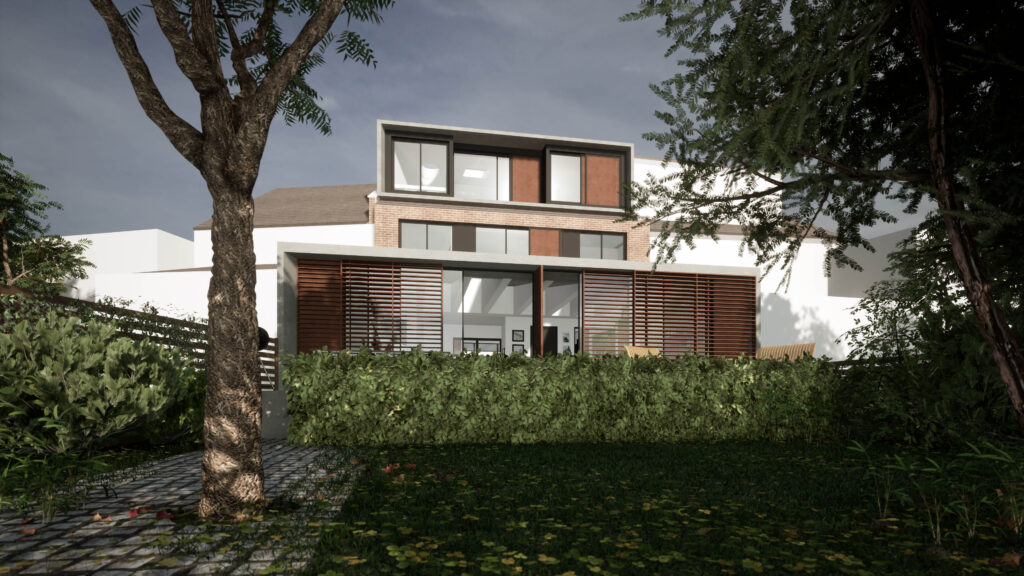
Chapter 1: What is MVHR?
MVHR, which stands for Mechanical Ventilation with Heat Recovery, is a cutting-edge technology that functions as both a ventilation system and a temperature regulator for buildings. It plays a crucial role in maintaining healthy indoor air quality while also ensuring that interior spaces remain comfortable throughout the year, regardless of external weather conditions.
At its core, an MVHR system consists of a heat exchanger unit that facilitates the transfer of heat or coolth between the incoming fresh air and the outgoing stale air. This heat exchange process is efficient and serves to moderate indoor temperatures without the need for excessive heating or cooling.
When the weather is cold, the MVHR system recovers heat from the warm air being extracted from the building and transfers it to the incoming fresh air. As a result, the building remains comfortably warm, even as the system continuously brings in fresh air from the outside. This heat recovery process is particularly beneficial in winter months, as it reduces the need for additional heating and minimises energy consumption.
During warmer periods, the MVHR system operates in reverse. It captures coolth from the cooler indoor air and transfers it to the incoming warm air from outside. This process helps to maintain a comfortable indoor temperature even on hot days, reducing the need for air conditioning and lowering energy usage.
The heat exchange process within an MVHR system is made possible by a highly efficient heat exchanger, typically constructed from materials with excellent thermal conductivity, such as aluminium or copper. This heat exchanger is designed to facilitate the rapid transfer of heat or coolth between the incoming and outgoing air streams without allowing the two air streams to mix. As a result, the system provides continuous fresh air without compromising the indoor temperature.
In addition to temperature regulation, MVHR systems are equipped with filters that remove pollutants, allergens, and other airborne contaminants from the incoming air. This filtration process ensures that the air within the building remains clean and healthy, making MVHR systems particularly beneficial for individuals with allergies or respiratory conditions.
To summarise, MVHR systems are innovative solutions that serve a dual purpose: they provide fresh, filtered air to buildings and regulate indoor temperatures by transferring heat or coolth between incoming and outgoing air. Their efficient operation reduces the need for additional heating or cooling, making them a cost-effective and environmentally friendly option for maintaining comfortable and healthy indoor environments.
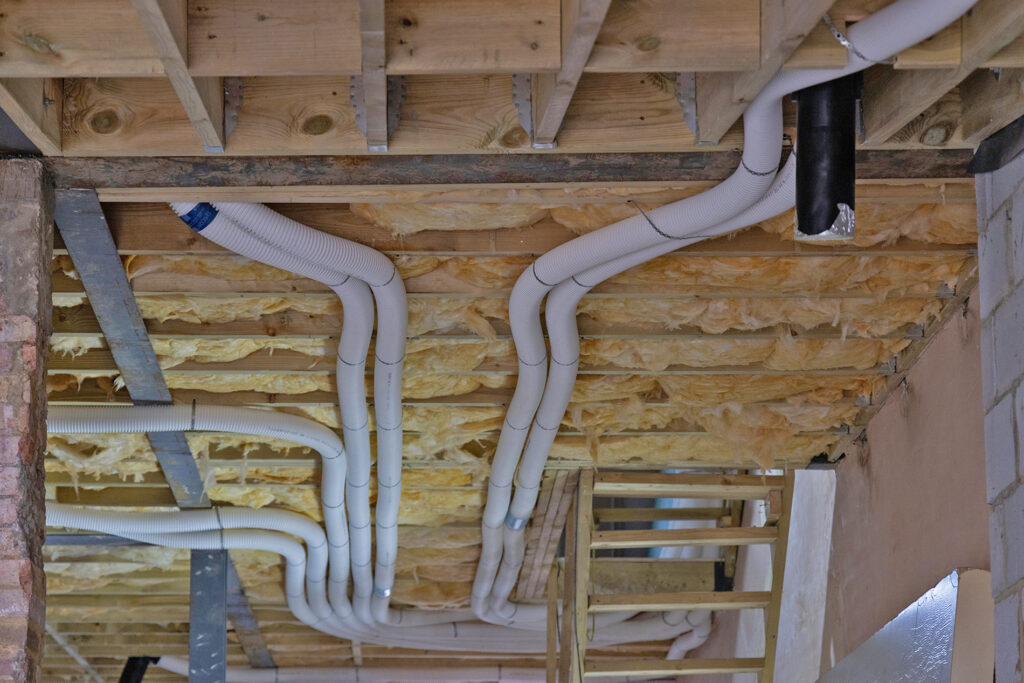
Chapter 2: MVHR and Cooling
It is crucial to understand the cooling capabilities of an MVHR system. While MVHR systems can offer some cooling capacity, this capacity is inherently limited. The principal reason behind this limitation is the inherent nature of air and its heat or cooling carrying capacity. To cool a space effectively, a substantial volume of air must be supplied, but MVHR systems, by design, work with a relatively low volume of air.
Air has a low thermal mass, meaning that it cannot hold a significant amount of heat or coolth. To achieve effective cooling, a large volume of air would need to circulate in a space, exchanging heat quickly. In contrast, MVHR systems are primarily designed to provide fresh and filtered air while recovering heat or coolth through a heat exchanger. These systems typically operate at boost air flow rates of around 0.5 air changes per hour, mainly to ensure good indoor air quality.
However, effective cooling usually requires a significantly higher air flow rate, typically around 2 air changes per hour. This means that the volume of air needed for effective cooling is almost four times the standard air flow rate provided by MVHR systems. Consequently, while MVHR systems can contribute to cooling, they may not be sufficient to address overheating in a room, especially during hot weather or in spaces with high heat loads.
Furthermore, the cooling effect of an MVHR system is largely passive, relying on the heat exchanger to transfer coolth from the cooler indoor air to the incoming warmer air from outside. While this can provide some relief from the heat, it is not equivalent to the more active and powerful cooling offered by dedicated cooling systems, such as air conditioning units.
It is also important to recognise that MVHR systems are designed to reduce energy consumption and enhance indoor air quality. Transforming an MVHR system into an inefficient cooling system would undermine its primary purpose. Therefore, it is crucial to approach the issue of overheating holistically, considering a combination of passive design strategies and active cooling solutions.
In summary, while MVHR systems can provide some cooling capacity, their primary role is to ensure good indoor air quality and recover heat or coolth through the heat exchanger. For effective cooling, especially during hot weather or in spaces with high heat loads, a more robust and dedicated cooling solution may be necessary. Understanding the limitations of MVHR cooling is essential for achieving a comfortable and energy-efficient indoor environment.
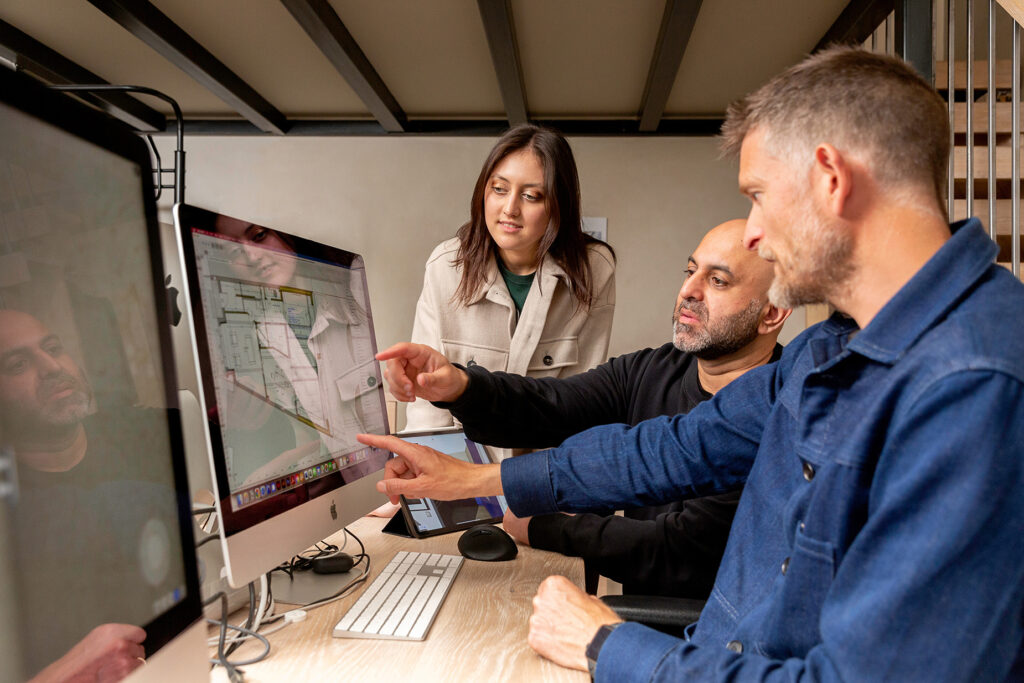
Chapter 3: Designing Out Overheating
Preventing overheating is a fundamental consideration when designing a building. It is far more effective and efficient to incorporate strategies that mitigate against overheating from the outset, rather than addressing it once it becomes an issue. Overheating in the UK is primarily attributed to solar gain, particularly through large south-facing windows that can result in a build-up of heat within the building. Fortunately, with careful design and planning, it is possible to minimise or even eliminate the risk of overheating.
One of the most effective tools for this purpose is the Passivhaus Planning Package (PHPP). The PHPP is a robust, comprehensive energy modelling software that allows architects to assess various parameters affecting a building’s performance, including its overheating risk. With PHPP, your architect can analyse the building’s orientation, window sizes and positions, shading strategies, insulation levels, and ventilation systems to develop a design that prevents overheating while ensuring optimal energy efficiency and comfort.
Once your building’s overheating risk has been assessed using PHPP, your architect can recommend a range of shading strategies tailored to your specific project. Shading strategies can include elements such as external shading devices, high-performance glazing, or strategic landscaping to block unwanted solar gain. These strategies are especially effective at mitigating overheating risks associated with large south-facing windows.
To further aid in preventing overheating, several organisations, such as the Passivhaus Trust and the Good Homes Alliance, offer valuable resources for both new build and retrofit projects. The Passivhaus Trust provides technical guidance on designing for summer comfort in the UK, helping to achieve the right balance between passive solar gain and shading to optimise indoor comfort. The Good Homes Alliance, on the other hand, offers tools and resources for preventing overheating in new homes and retrofit projects, ensuring that even existing buildings can benefit from improved thermal comfort and reduced overheating risks.
It is also important to consider that overheating can result not only from solar gain but also from internal heat sources such as lighting, appliances, cooking, and occupancy. By incorporating energy-efficient lighting and appliances, utilising natural ventilation, and considering the specific occupancy patterns and behaviours of the building’s inhabitants, architects can further reduce the risk of overheating.
In conclusion, designing out overheating from the start is the most effective way to ensure a comfortable indoor environment. Through careful planning, the use of tools like PHPP, and the incorporation of shading strategies, it is possible to create buildings that remain cool and comfortable even during the hottest days. By taking a proactive approach and utilising the resources available, we can create spaces that are not only energy-efficient but also enjoyable to live and work in.
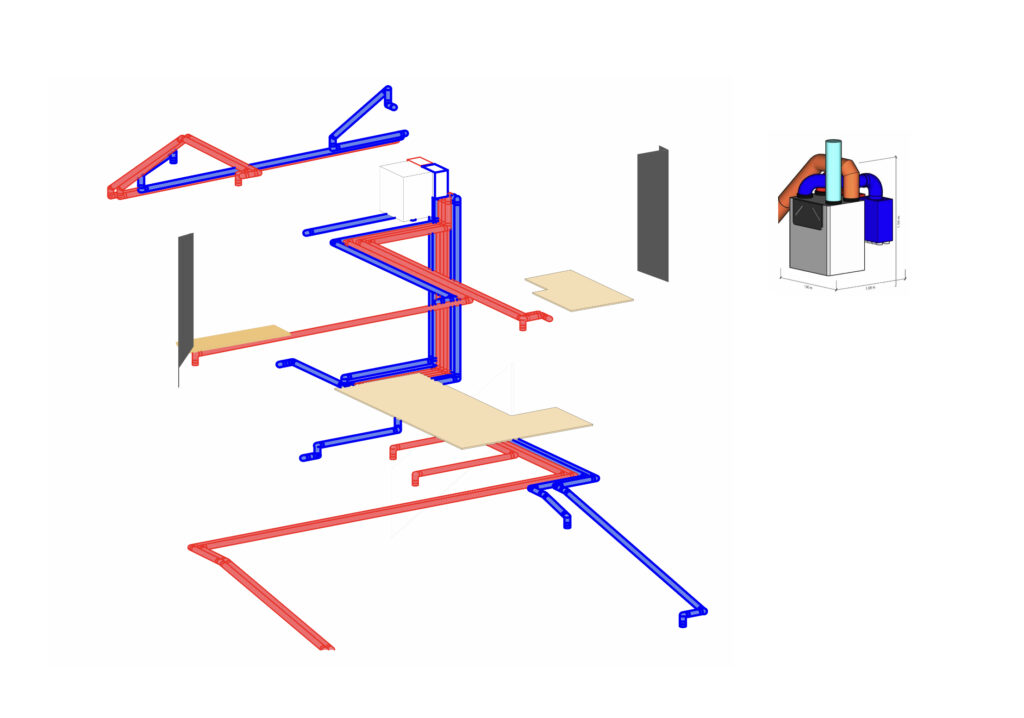
Chapter 4: Reducing Overheating Post-Design
Overheating can be a considerable concern in buildings, especially during the warmer months. Even if your building is already constructed and you didn’t address overheating at the design stage, it’s not too late. There are numerous strategies and techniques that can be employed post-design to reduce overheating, enhance comfort, and even reduce energy costs.
- External Shading Devices: Adding external shading devices, such as awnings, pergolas, or louvres, can significantly reduce solar gain. These structures shade the building’s windows and facades, preventing direct sunlight from entering the interior and causing excessive heat build-up.
- High-Performance Glazing: If your building has large windows that contribute to overheating, consider upgrading to high-performance glazing. Double or triple-glazed windows with low-emissivity coatings can reduce solar gain and improve the building’s thermal performance.
- Landscaping and Greenery: Landscaping can provide natural shading and create a cooler microclimate around your building. Trees, shrubs, and other vegetation can shade windows, walls, and outdoor spaces. Green roofs and green walls can also help to insulate the building and reduce solar gain.
- Insulation and Thermal Mass: Improving insulation can help to stabilise indoor temperatures. Adding insulation to walls, roofs, and floors can reduce heat transfer and maintain a more consistent indoor climate. Materials with high thermal mass, such as stone or concrete, can absorb heat during the day and release it at night, helping to moderate temperature fluctuations.
- Natural Ventilation: Encouraging natural ventilation can help to cool the building. Opening windows and doors, particularly in the evenings and early mornings when the outdoor air is cooler, can reduce indoor temperatures. Installing vents or operable skylights can also facilitate airflow and cooling.
- Reflective Surfaces: Painting roofs and walls with light, reflective colours can reduce solar gain. Reflective materials can decrease the amount of heat absorbed by the building’s surfaces, lowering the overall temperature.
- Blinds and Curtains: Internal shading devices, such as blinds or curtains, can help to block direct sunlight and reduce glare. While not as effective as external shading devices, they can still contribute to reducing overheating.
- Behavioural Changes: Occupant behaviour can significantly influence indoor temperatures. Turning off lights, appliances, and equipment when not in use can reduce internal heat gains. Cooking during cooler parts of the day and using energy-efficient appliances can also help to reduce overheating.
- Ceiling Fans: Ceiling fans can enhance air circulation and create a cooling effect. While they don’t lower the actual room temperature, they can make the space feel cooler by facilitating the evaporation of moisture from the skin.
- Retrofitting: In some cases, it might be necessary to undertake more extensive retrofitting measures to reduce overheating. This could involve reconfiguring spaces, altering window sizes or positions, or even adding new architectural elements to provide shading.
It’s important to note that the most suitable measures will depend on your specific building and its unique characteristics. Combining multiple strategies can often be more effective than implementing a single measure. In some cases, it might be necessary to consult with an experienced architect or building professional to assess your options and ensure the best results.
Reducing overheating post-design is not only possible but can significantly improve the comfort, energy efficiency, and overall performance of your building. By exploring various shading strategies and employing appropriate measures, you can create a cooler and more pleasant indoor environment, regardless of the initial design considerations.

Chapter 5: The Shortcomings of MVHR for Cooling
Mechanical Ventilation with Heat Recovery (MVHR) systems are innovative and can offer substantial benefits in providing fresh, filtered air to buildings and recovering heat during the colder months. However, they do have certain limitations when it comes to cooling, particularly in buildings with varied cooling needs across different rooms. Here, we discuss the key shortcomings of MVHR systems for cooling purposes:
- Centralised Single Ventilation Zone: One of the main limitations of MVHR systems with integrated cooling is that they operate as a single, centralised ventilation zone. This means that the system is unable to target specific areas for cooling. As a result, some rooms, such as those with south-facing glazing, may remain overheated, while other rooms with less need for cooling could become over-cooled.
- Lack of Zoning Capabilities: Unlike some other cooling systems, MVHR systems cannot be zoned to provide differential cooling to different areas of a building based on their specific needs. This can lead to an inefficient cooling approach where some rooms are cooled more than necessary, while others are not cooled enough. In contrast, zoned cooling systems allow for customised temperature control for each area, offering a more efficient and comfortable cooling solution.
- Inadequate Cooling Capacity: MVHR systems are primarily designed for ventilation and heat recovery, not for cooling. As a result, they often lack the cooling capacity needed to provide adequate temperature reduction in buildings with high cooling demands. This is particularly true in buildings with large glazing areas that experience significant solar gain, or in areas with high summer temperatures.
- High Air Volume Requirement: For cooling to be effective through an MVHR system, a large volume of air needs to be supplied to the space. However, MVHR systems are designed to work with low air volumes, primarily for ventilation purposes. This limitation means that they may struggle to provide the necessary air changes per hour needed for effective cooling, particularly in larger spaces or buildings with high cooling demands.
- Inefficient Cooling: One of the main purposes of an MVHR system is to reduce energy consumption by recovering heat. When these systems are repurposed as cooling systems, they can become inefficient and may increase energy consumption. This is particularly true when attempting to use MVHR systems for extensive cooling, as it would require the supply of much more air, necessitating larger MVHR units, ducts, silencers, and insulated ducting, which may not be feasible or cost-effective.
- Lack of Flexibility: MVHR systems with integrated cooling offer limited flexibility in terms of temperature control and customisation. They operate at a constant rate, without the ability to adjust cooling levels for different areas or times of day. This lack of adaptability can lead to inefficient cooling and discomfort for occupants.
In conclusion, while MVHR systems offer valuable benefits for ventilation and heat recovery, they have inherent limitations when it comes to cooling. These shortcomings can lead to inefficient and ineffective cooling, particularly in buildings with varied cooling needs across different rooms. Therefore, it is essential to consider alternative cooling solutions that provide greater flexibility, zoning capabilities, and sufficient cooling capacity to meet the specific requirements of your building.

Chapter 6: MVHR as an Effective Cooling Solution
Mechanical Ventilation with Heat Recovery (MVHR) systems have become a popular choice for providing fresh air and temperature regulation in contemporary homes. While the use of MVHR for cooling has its limitations, as highlighted in the previous chapter, there are situations where MVHR can offer an efficient and effective cooling solution. Let’s explore these scenarios in greater detail:
- Low Cooling Loads: MVHR systems can be particularly effective for cooling in situations with low cooling loads. These are scenarios where the building has a well-insulated envelope, good solar shading, and low internal heat gains, resulting in minimal overheating. In such cases, the cooling demands are low enough to be met by the MVHR system’s limited cooling capacity. This can be a viable option for buildings designed with a strong focus on passive cooling strategies and energy-efficient construction.
- Even Cooling Loads Between Rooms: MVHR systems operate as a centralised single ventilation zone, which makes them more suitable for buildings with relatively even cooling loads between rooms. In situations where all the rooms have similar cooling demands, MVHR can distribute cool air more evenly and effectively. This is more likely in smaller properties with consistent room sizes, orientations, and glazing.
- Small Properties: MVHR systems can be an excellent cooling solution for small properties with only a few rooms. In such cases, the cooling demands of individual rooms are more likely to be uniform, allowing the MVHR system to provide effective single-zone cooling. This is particularly true for compact homes with open-plan layouts, where air can circulate more freely and evenly throughout the space.
- Energy Efficiency: In some instances, using MVHR for cooling may be more energy-efficient than installing a separate active cooling system. By pre-cooling the incoming air during occasional extreme temperatures, MVHR can reduce the need for additional cooling, saving energy and lowering utility bills. This can be a cost-effective and sustainable solution for buildings with low cooling demands.
- Air Quality: Another advantage of using MVHR for cooling is the improvement in indoor air quality. MVHR systems continuously supply fresh, filtered air to the building while removing stale air and pollutants. This can create a healthier and more comfortable living environment, particularly during the summer months when air quality can be compromised by high pollen levels and pollution.
- Integration with Passive Cooling Strategies: MVHR can be used in conjunction with passive cooling strategies to enhance the overall cooling performance. For example, night-time cooling can be used to pre-cool the building, while the MVHR system can maintain a comfortable temperature during the day. The combination of passive and active cooling can offer a more holistic approach to temperature regulation.
- Minimal Disruption: For buildings already equipped with an MVHR system, adding additional cooling capabilities can be a convenient option that requires minimal changes to the existing infrastructure. This can save time and money compared to installing a separate cooling system.
In conclusion, while MVHR systems may not be suitable for all cooling scenarios, they can be an effective solution in specific situations, such as those with low cooling loads, even cooling demands, or small properties. By integrating MVHR with passive cooling strategies and considering the unique requirements of each building, it is possible to achieve a comfortable, energy-efficient, and sustainable cooling solution.
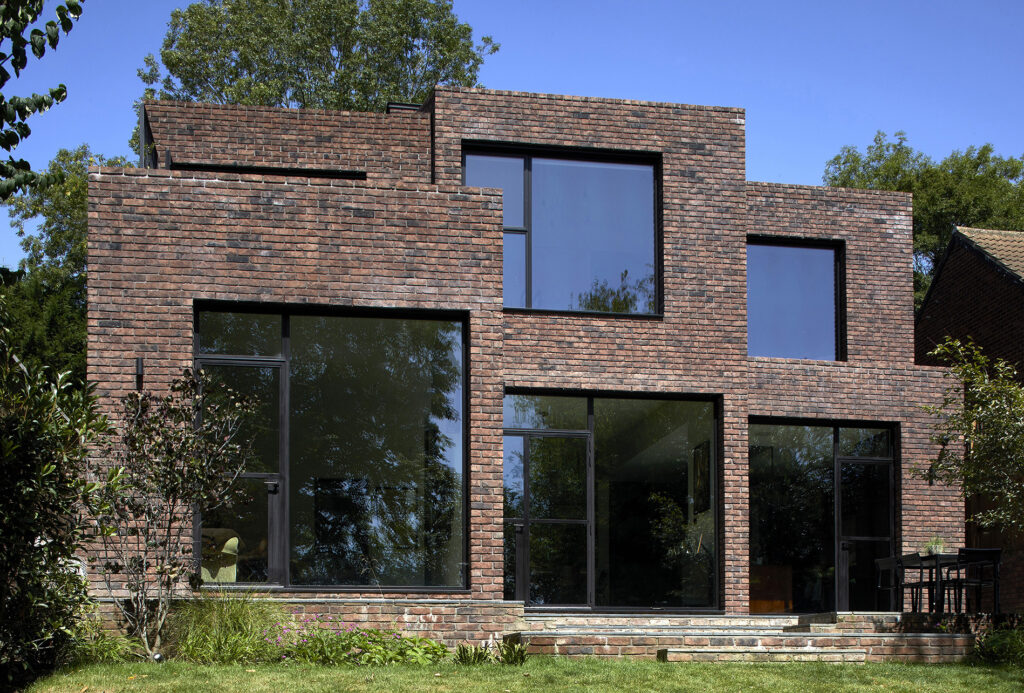
Chapter 7: Alternative Cooling Systems
In situations where passive cooling strategies and MVHR systems are unable to provide sufficient relief from overheating, active cooling systems become a necessary consideration. As an architect with two decades of experience in designing low-energy and low embodied carbon buildings, I have explored a variety of alternative cooling solutions tailored to the unique needs of each project. In this chapter, I will discuss some of these alternatives, highlighting their benefits and considerations.
- Traditional Air Conditioning: This is one of the most common active cooling systems, particularly for commercial and residential buildings. Traditional air conditioning systems use refrigerant cycles to absorb heat from the interior space and expel it outdoors. These systems can provide powerful cooling, but they can also be energy-intensive and can contribute to greenhouse gas emissions.
- Split-System Air Conditioners: These are a type of air conditioner where the system is split into two main components: an outdoor condenser unit and an indoor evaporator unit. They are suitable for cooling individual rooms or small areas and are more energy-efficient compared to central air conditioning systems.
- Fan Coils: These are devices that use fans to move air over a coil filled with a coolant, which can be either cold water or refrigerant. The air is then circulated back into the room, lowering the temperature. Fan coils can be installed in the ceilings or walls of rooms experiencing overheating, providing targeted cooling.
- Chilled Beams: These are cooling systems that use chilled water circulated through beams installed within a room’s ceiling or suspended below it. They rely on natural convection to cool the space, as the cold beams cause the warm air to descend, and the cool air to rise. Chilled beams are highly efficient and can be suitable for commercial or large residential buildings.
- Radiant Cooling Panels: These panels are mounted on walls or ceilings and use cold water to absorb heat from the surrounding environment. They provide uniform cooling and are particularly effective for large open spaces.
- Evaporative Cooling: This natural cooling method works by using water to absorb heat from the air. As the water evaporates, it reduces the air temperature. Evaporative coolers are more energy-efficient than traditional air conditioners but are best suited for dry climates.
- Geothermal Cooling: This system uses the earth’s stable temperature as a heat sink for cooling. By circulating a fluid through pipes buried underground, heat is transferred from the building to the earth. Geothermal cooling is highly efficient and sustainable but requires a significant initial investment.
- Thermal Storage: This approach involves storing cool energy during off-peak hours (usually at night) and releasing it during peak demand times. Thermal storage can reduce energy consumption and costs by taking advantage of lower off-peak electricity rates.
- Hybrid Systems: These systems combine multiple cooling methods to optimize performance. For example, a hybrid system could include a traditional air conditioner for peak cooling needs and an evaporative cooler for moderate cooling demands.
When choosing an active cooling system, it is essential to consider factors such as the building’s size, layout, orientation, glazing, and insulation. It is also crucial to evaluate the local climate, energy costs, and environmental impact. By working with experienced professionals, such as mechanical engineers and HVAC consultants, you can design a tailored cooling solution that meets your specific needs while minimizing energy consumption and carbon emissions. Remember that active cooling systems can work alongside MVHR systems without affecting the MVHR system’s performance, offering a comprehensive approach to temperature regulation and indoor air quality.

Chapter 8: Building Orientation and Window Sizes
In every project we work on, we emphasise the importance of considering building orientation and window sizes as vital elements in passive design strategies to reduce the risk of overheating and enhance energy efficiency. In this chapter, I will discuss how these two factors interact and impact a building’s internal climate.
- Building Orientation: The direction a building faces significantly affects the amount of sunlight it receives throughout the day. In the UK, south-facing buildings are exposed to more sunlight, particularly during the summer months when the sun is higher in the sky. East-facing windows receive morning sunlight while west-facing windows are exposed to the late afternoon sun. North-facing windows typically receive the least direct sunlight. Therefore, careful consideration of building orientation can help balance natural light and heat gains.
- Window Sizes and Placement: Large windows can significantly increase solar gain, leading to overheating. On the other hand, well-placed windows can provide natural daylight, reducing the need for artificial lighting and enhancing the occupants’ well-being. When determining window sizes and placement, it’s essential to consider the building’s orientation, the function of each space, and the desired thermal performance.
- Glazing Types: Different types of glazing can influence the amount of solar heat gain and light transmission. For instance, low-emissivity (Low-E) glass has a special coating that reflects heat back into the room, reducing heat loss during winter and protecting against solar gain in summer. Double or triple glazing with inert gas-filled cavities provides better insulation than single glazing. Solar control glass can block a significant portion of solar radiation, reducing overheating risks.
- External Shading: External shading devices, such as louvres, pergolas, or overhangs, can prevent excessive solar gain through south-facing windows. These devices can be designed to block high-angle summer sunlight while allowing low-angle winter sunlight to enter, providing passive heating.
- Thermal Mass: High thermal mass materials, like concrete or brick, can absorb and store heat during the day and release it slowly at night. Placing thermal mass near south-facing windows can help regulate indoor temperatures, absorbing excess heat during the day and releasing it during cooler evenings.
- Natural Ventilation: Properly designed windows can facilitate natural ventilation, allowing cool air to enter and hot air to escape. Cross-ventilation, achieved by placing windows on opposite sides of a room or building, can effectively reduce indoor temperatures.
- Landscaping: Trees and vegetation can provide natural shading, reducing solar gain through windows. Deciduous trees are particularly beneficial, as they offer shade in summer and allow sunlight to pass through during winter when their leaves have fallen.
- Integrated Design Approach: Building orientation and window sizes should be considered in conjunction with other design elements such as insulation, HVAC systems, and interior layout. An integrated design approach ensures that all components work together harmoniously to achieve optimal thermal comfort and energy efficiency.
In conclusion, building orientation and window sizes are fundamental factors in passive design strategies to prevent overheating and enhance overall building performance. By carefully considering these elements during the design phase, architects and designers can create buildings that offer thermal comfort, energy efficiency, and a pleasant living or working environment for occupants.

Chapter 9: External Solar Shading
External solar shading plays a crucial role in mitigating overheating, particularly in buildings with large areas of glazing. In this chapter, I will delve into the different types of external solar shading solutions and how they can be effectively incorporated into your building’s design to combat overheating and improve thermal comfort.
- Overhangs and Eaves: Overhangs and eaves are horizontal shading devices that extend beyond the facade of a building, providing shade to south-facing windows. These shading elements can be designed to block high-angle summer sun while allowing low-angle winter sun to enter, offering passive heating when needed.
- Vertical Louvres: Vertical louvres or fins can be attached to a building’s facade, providing shade to east or west-facing windows, which are typically exposed to the sun during the morning or late afternoon. These shading devices can be fixed or adjustable, allowing for manual or automated control to adapt to changing sun angles throughout the day.
- Horizontal Louvres: Horizontal louvres are similar to overhangs but are typically smaller and placed closer to the window surface. They can be fixed or adjustable, providing more control over the amount of sunlight entering the building. These louvres can be particularly useful for high-rise buildings or situations where extending an overhang may not be feasible.
- Brise Soleil: A brise soleil is an architectural feature that consists of horizontal or vertical shading elements that extend beyond the building’s facade, providing shade while adding visual interest to the building’s exterior. These shading devices can be customized to fit the building’s architectural style and shading requirements.
- Pergolas and Trellises: Pergolas and trellises can be installed over outdoor spaces, such as terraces or patios, providing shade and reducing solar gain through adjacent windows. These structures can be covered with climbing plants, adding greenery and creating a pleasant outdoor environment.
- Shading with Vegetation: Trees and shrubs can provide natural shading, reducing solar gain through windows. Deciduous trees are particularly beneficial, offering shade in summer while allowing sunlight to pass through during winter when their leaves have fallen. Green roofs and vertical gardens can also reduce solar heat gain, enhancing the building’s thermal performance.
- Shading with Blinds and Awnings: External blinds and awnings can be installed on windows or balconies, providing adjustable shading and allowing occupants to control the amount of sunlight entering their spaces. These shading solutions can be manually operated or automated, responding to changes in sun angles, weather conditions, or occupants’ preferences.
- Benefits of External Solar Shading: Properly designed external solar shading can significantly reduce solar heat gain and enhance indoor thermal comfort. By preventing excessive sunlight from entering the building, external shading can reduce the need for mechanical cooling and lower energy consumption, resulting in energy savings and reduced carbon emissions. Moreover, external shading can enhance the building’s aesthetics and create comfortable outdoor spaces for occupants to enjoy.
- Integrated Approach: When incorporating external solar shading into a building’s design, it is essential to consider the building’s orientation, window sizes, and other passive design strategies. An integrated approach ensures that all elements work together harmoniously to achieve optimal thermal comfort, energy efficiency, and aesthetic appeal.
In conclusion, external solar shading is a vital tool in an architect’s toolkit for mitigating overheating and enhancing a building’s overall performance. By carefully selecting and designing shading solutions that suit your building’s specific needs, you can create comfortable and energy-efficient spaces for occupants to enjoy throughout the year.
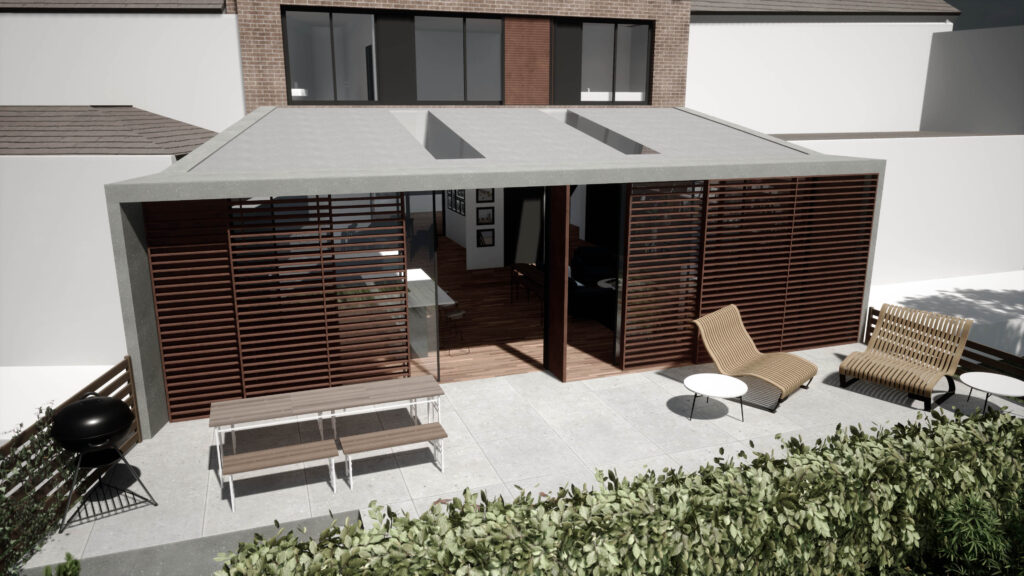
Chapter 10: The Role of Internal Heat Gains
In the world of building physics, the term ‘heat gains’ refers to the various sources of heat that can increase the temperature within a building. While external sources like solar radiation are often the focus of discussions on overheating, it is essential not to overlook the impact of internal heat gains. Internal heat gains arise from various sources, including occupants, lighting, appliances, and cooking. This chapter explores the role of internal heat gains in overheating and strategies for effectively managing these gains to ensure a comfortable indoor environment.
- Understanding Internal Heat Gains:
- Internal heat gains stem from several sources within a building, each contributing to the overall heat load. Occupants generate heat through their metabolism, activities, and the use of electrical devices. Lighting, especially incandescent and halogen bulbs, can emit significant heat. Appliances such as televisions, computers, and kitchen equipment also produce heat during operation. Cooking, with the use of ovens and stovetops, can quickly raise indoor temperatures. These heat sources, when combined, can significantly contribute to overheating, particularly in well-insulated buildings where heat is retained.
- Impact on Indoor Comfort:
- As internal heat gains accumulate, they can elevate indoor temperatures, resulting in discomfort for occupants. Excessive heat can lead to increased perspiration, fatigue, and irritability. It can also impair cognitive performance and sleep quality, impacting overall well-being.
- Strategies for Managing Internal Heat Gains:
- Behavioural Measures: Encouraging occupants to adopt practices like turning off unused appliances, using energy-efficient lighting, and cooking during cooler parts of the day can help reduce internal heat gains.
- Efficient Appliances: Investing in energy-efficient appliances that generate less heat during operation can help mitigate internal heat gains.
- Natural Ventilation: Opening windows and doors during cooler periods, such as early morning and evening, can facilitate the exchange of hot indoor air with cooler outdoor air.
- Insulated Curtains and Blinds: Using insulated curtains and blinds can help reduce heat gain from sunlight while also helping to contain internal heat gains.
- HVAC Systems: Properly designed and maintained heating, ventilation, and air conditioning (HVAC) systems can effectively manage internal heat gains by distributing and removing excess heat.
- Recirculating Fan Coils: Recirculating fan coils can cool single rooms by removing heat and recirculating cooled air. They are often the most effective solution for addressing internal heat gains, especially in rooms with high occupancy or appliance use.
- Integration with Other Cooling Strategies:
- Managing internal heat gains should be part of a comprehensive cooling strategy that includes measures like external solar shading, natural ventilation, and passive cooling. Integrating these strategies can help achieve a holistic approach to maintaining thermal comfort.
- Consideration in Building Design:
- When designing a new building or retrofitting an existing one, it is crucial to consider the potential for internal heat gains. Accurate assessment of heat loads, including internal heat gains, can inform the design of appropriate cooling systems and measures to ensure long-term thermal comfort for occupants.
In conclusion, internal heat gains are a significant contributor to overheating in buildings. By understanding the sources of these gains and implementing strategies to manage them, it is possible to create a comfortable and energy-efficient indoor environment. Recirculating fan coils, in particular, offer an effective solution for addressing internal heat gains, especially in spaces with high occupancy or appliance use.
Conclusion
In wrapping up our discussion on MVHR systems and their cooling capacity, it is essential to acknowledge that while these systems provide some cooling benefits, they may not be the most effective solution for more extensive cooling needs. The inherent limitations of MVHR systems in terms of airflow volume and zoning make them less suited for addressing the diverse cooling requirements of a building.
The most impactful way to manage overheating is through a preventive approach that addresses potential issues at the design stage. By taking a comprehensive, fabric-first approach, architects can optimise building orientation, window sizes, and shading strategies to minimise solar gain and reduce the risk of overheating. Implementing these measures during the design phase can save both time and resources in the long run, avoiding the need for costly retrofit solutions.
However, when overheating does occur in a building already past the design stage, it is crucial to explore alternative cooling systems and strategies. These alternatives range from traditional air conditioning systems to more innovative solutions like fan coils installed in the ceilings of rooms experiencing overheating. Such systems can be effectively used alongside MVHR systems without impacting their performance.
Furthermore, managing internal heat gains is an essential aspect of any effective cooling strategy. The heat produced by occupants, lighting, appliances, and cooking can significantly contribute to overheating. To address these internal heat gains, solutions such as recirculating fan coils, which can cool single rooms, offer an effective means of temperature control.
Finally, it is essential to consider that there is no one-size-fits-all solution for cooling. The best approach for each building will depend on various factors, including its size, orientation, location, and occupancy patterns. It is important to work with experienced professionals who can assess your building’s unique requirements and design an appropriate cooling strategy tailored to your needs.
In conclusion, mitigating overheating is a multifaceted challenge that requires a holistic approach. By designing out overheating risks from the start and addressing internal heat gains, it is possible to create a comfortable and energy-efficient indoor environment. When MVHR systems are insufficient for extensive cooling needs, alternative cooling systems and strategies should be explored. Proper building orientation, window sizing, external shading, and management of internal heat gains all play crucial roles in an effective cooling strategy.
If you would like to talk through your project with the team, please do get in touch at mail@risedesignstudio.co.uk or give us a call on 020 3290 1003
RISE Design Studio Architects company reg no: 08129708 VAT no: GB158316403 © RISE Design Studio. Trading since 2011.
